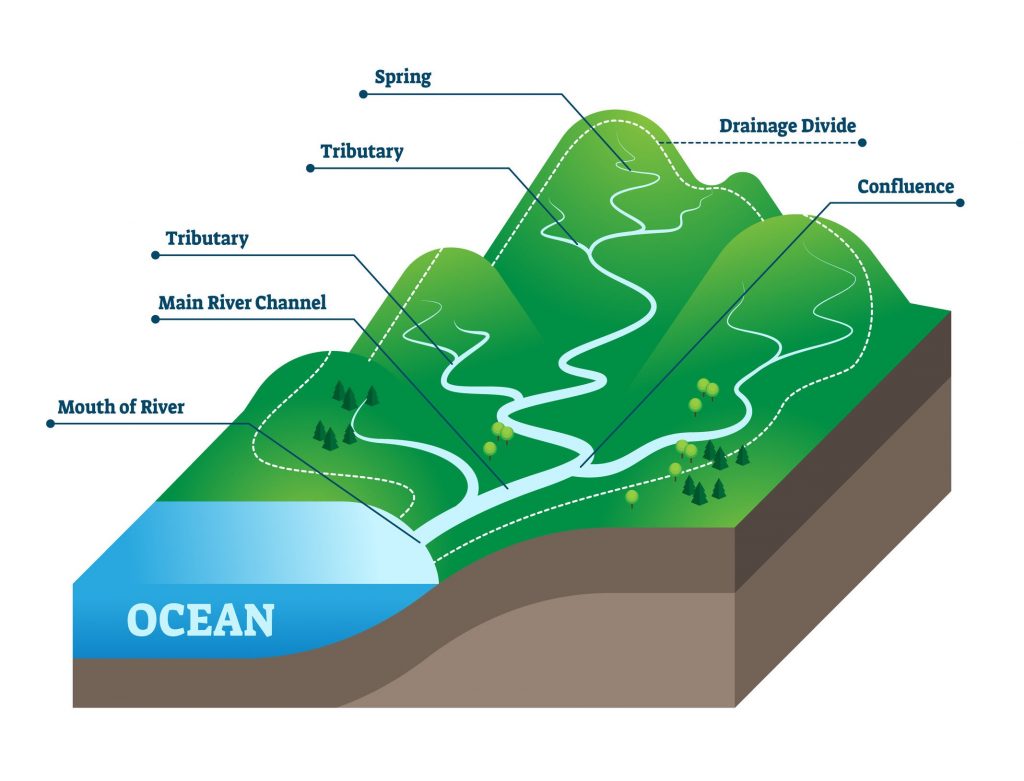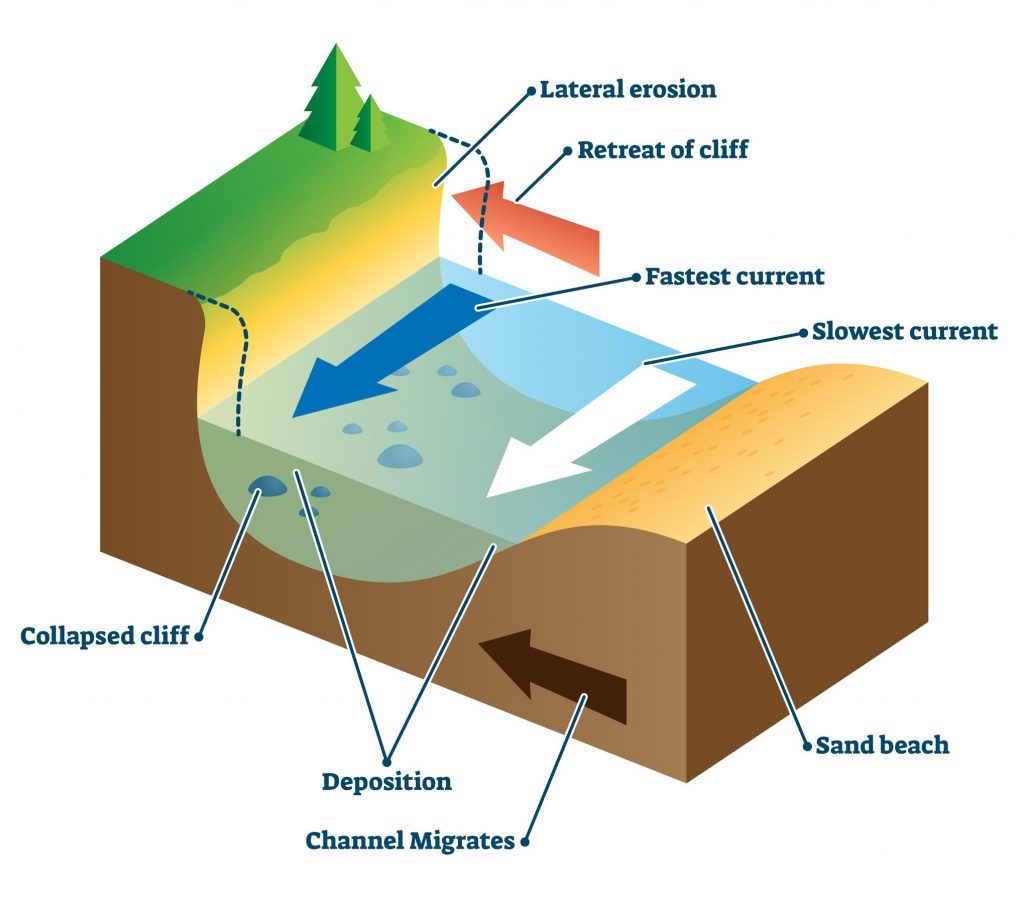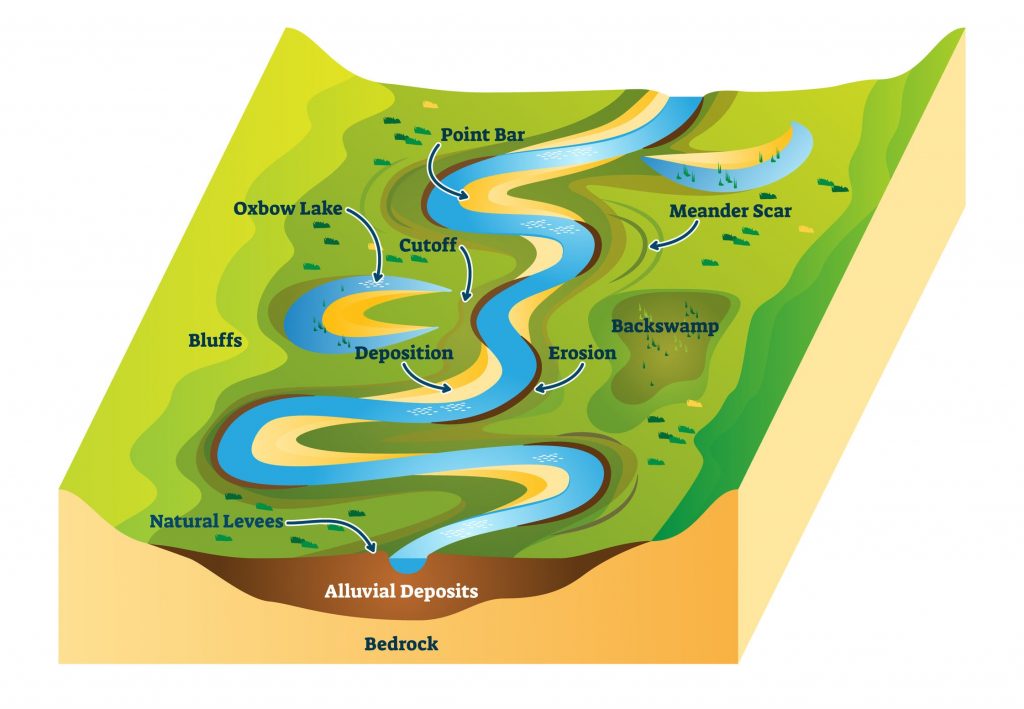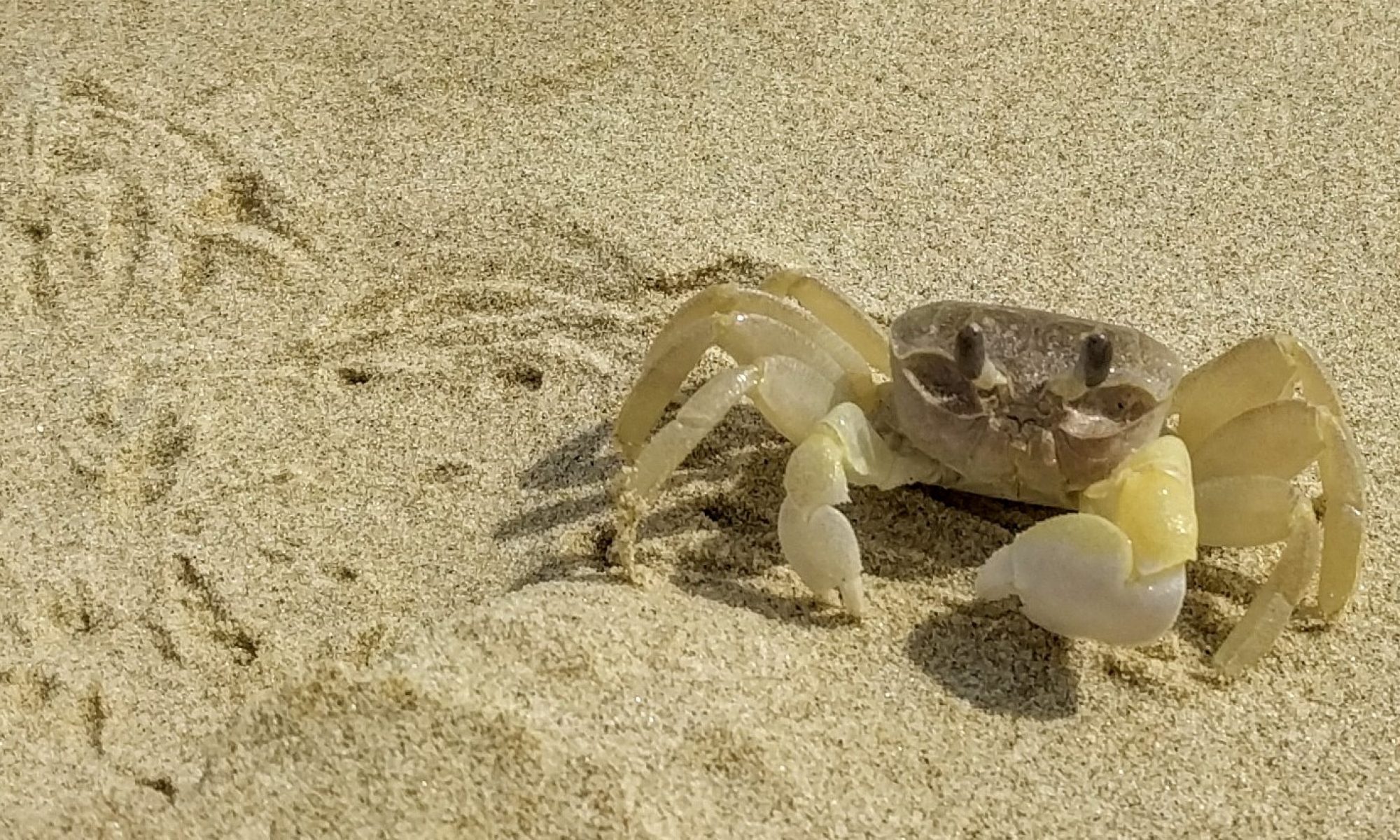A river is a natural watercourse flowing towards an ocean, sea, lake or another river. In some cases a river flows into the ground and becomes dry at the end of its course without reaching another body of water.

Rivers are split up into three parts, upper, middle and lower courses. The upper course is closest to the source of a river and is usually high and mountainous. At this point the river has a steep gradient with fast-flowing water. There is a lot of vertical erosion and weathering. The key features of the upper course include:
- V-shaped valleys
- waterfalls
- rapids
- gorges
In the middle course the river starts to slow down. The river gets wider and travels in meandering loops. There is lateral erosion, deposition and transportation. The middle course can take up most of the river. The key features of the middle course include:
- floodplains
- meanders
- oxbow lakes
The lower course represents the end of the course of a river. The gradient is at it’s gentlest, as the river makes its approaches the sea. Rivers usually have a wide, smooth channel and water moves at its slowest. The key features of the lower course include:
- large floodplains
- deltas and estuaries
- Levees
Adapted from Riverwise: Parts of a River



